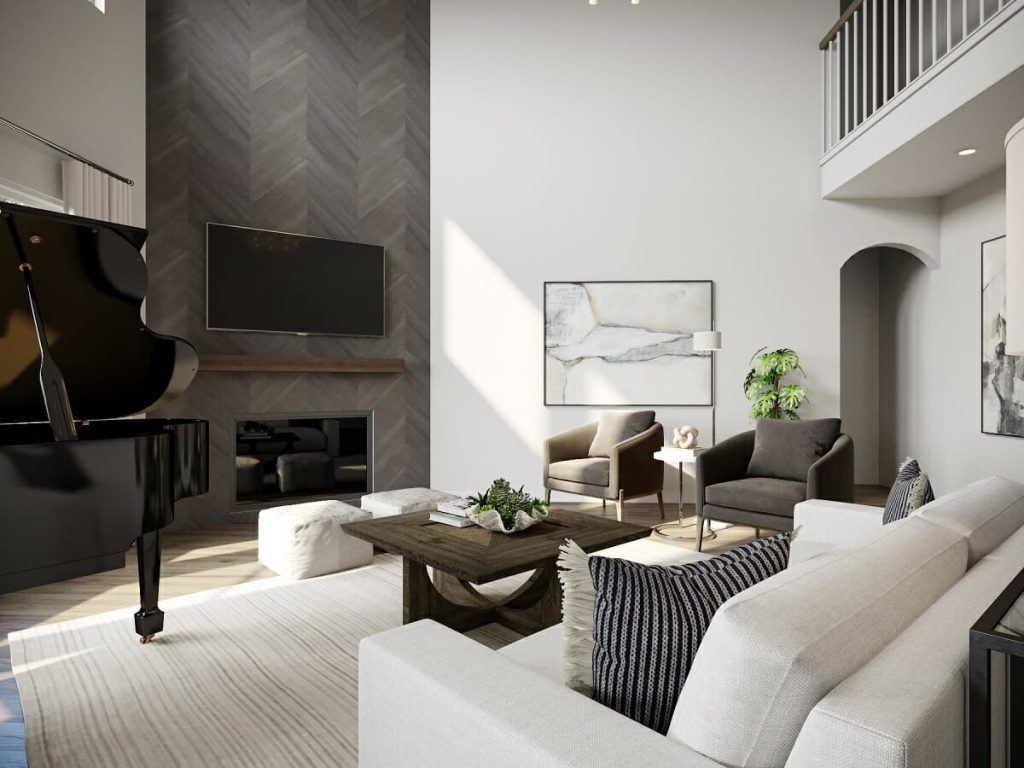
Classic interior design stands as a testament to enduring style. A thoughtfully crafted space, it speaks volumes about taste and elegance, transcending fleeting trends and embracing ageless charm. This design philosophy, steeped in tradition and sophistication, isn’t just about mimicking past aesthetics, but rather understanding the principles that make these styles enduring. Many homeowners are struggling with the pressures of fast-fashion trends and interior decor fads that leave them feeling stuck or unsure about how to achieve a harmonious design. This article offers practical strategies and design principles to help you achieve a truly timeless classic interior design, transforming your home into a stylish haven.
Understanding Classic Interior Design:
Defining Timeless Aesthetics
Classic interior design isn’t about adhering to specific historical periods, but rather about embracing core principles of enduring style. These principles emphasize elegance, sophistication, and high-quality craftsmanship. In essence, it’s about creating spaces that stand the test of time, not dictated by ephemeral trends. Think of classic interior design as a foundation, capable of accommodating evolving tastes while retaining its inherent elegance.
Key Elements of Classic Design:
Balancing Form and function
One key element is the perfect harmony between form and function. Classic designs often attribute carefully considered layouts that prioritize practicality and flow. Each piece of furniture and decor contributes to a unified narrative, maximizing space and functionality without sacrificing aesthetic appeal. A classic space is a testament to the understanding that beauty is rooted in order and thoughtful placement.
Choosing Timeless Materials
The use of high-quality, durable materials is a hallmark of classic design. Wood, stone, and other natural elements evoke warmth, sophistication, and longevity. These materials often attribute subtle textures and intricate detailing, adding visual appeal and enriching the overall experience. For example, consider using rich woods like mahogany or walnut in flooring, cabinetry, and furniture.
The Importance of Color Palettes:
Creating a Sophisticated Atmosphere
Color palettes in classic design often include a combination of neutral tones like creams, beiges, grays, and deep blues. These create a sophisticated and calming atmosphere. Occasionally, pops of bolder colors, like emerald green or rich burgundy, are strategically used to add depth and interest without overpowering the overall aesthetic. A well-balanced color scheme fosters a sense of calm and harmony.
Maintaining Balance and Proportions
Maintaining a sense of balance and proportion is crucial. This ensures the space appears visually appealing and coordinated rather than cluttered or chaotic. Proportion, especially with furniture arscopement, is vital.
Enhancing with Lighting and Accessories:
Layering Light for Depth and Dimension
Strategic lighting plays a vital function in elevating the classic interior design aesthetic. Layers of lighting – ambient, task, and accent lighting – are used to create a space that feels both inviting and sophisticated. Think of layered lighting as enhancing the atmosphere of the space, adding depth and dimension while highlighting specific attributes.
Avoiding Trendy Elements:
Emphasizing Enduring Style
To achieve a truly classic interior design, avoid fleeting trends. Focus instead on timeless elements and designs that resonate with enduring style. This will help your space remain pertinent and appealing long after current trends fade.
Maintaining the Classic Aesthetic:
Refreshing the Space Over Time
Even a classic interior design can need refreshing over time. To maintain the classic aesthetic, consider updating accessories, adding new artwork, or refreshing the color palette. This ensures the space remains fresh and pertinent without sacrificing its classic design.
Modernizing Classic Elements:
Blending Tradition with Contemporary Design
Modernizing classic interior design can be achieved by integrating contemporary elements into traditional spaces. This can involve incorporating minimalist furniture, streamlined accessories, or modern lighting fixtures. The key is to maintain the underlying principles of classic design, such as symmetry and balance, and create an effortless synergy that blends traditional sophistication with the contemporary.
Classic Interior Design for Every Style:
Designing Timeless Spaces That Reflect Your Individuality
Ultimately, classic interior design offers a framework for creating a space that’s both stylish and practical. Embrace its flexibility to create a personalized and timeless interior that reflects your individual style and preferences. For example, consider blending classic sophistication with modern comfort to tailor the design to your personality.
In conclusion, embracing classic interior design principles can elevate your living space to a timeless aesthetic. By focusing on versatile elements, high-quality materials, and enduring design principles, you can create a home that beautifully blends tradition with modern practicality. Now, consider exploring further by visiting our gallery to discover more classic interior design ideas! Our expert team is eager to help you transform your home into a sanctuary of timeless beauty.